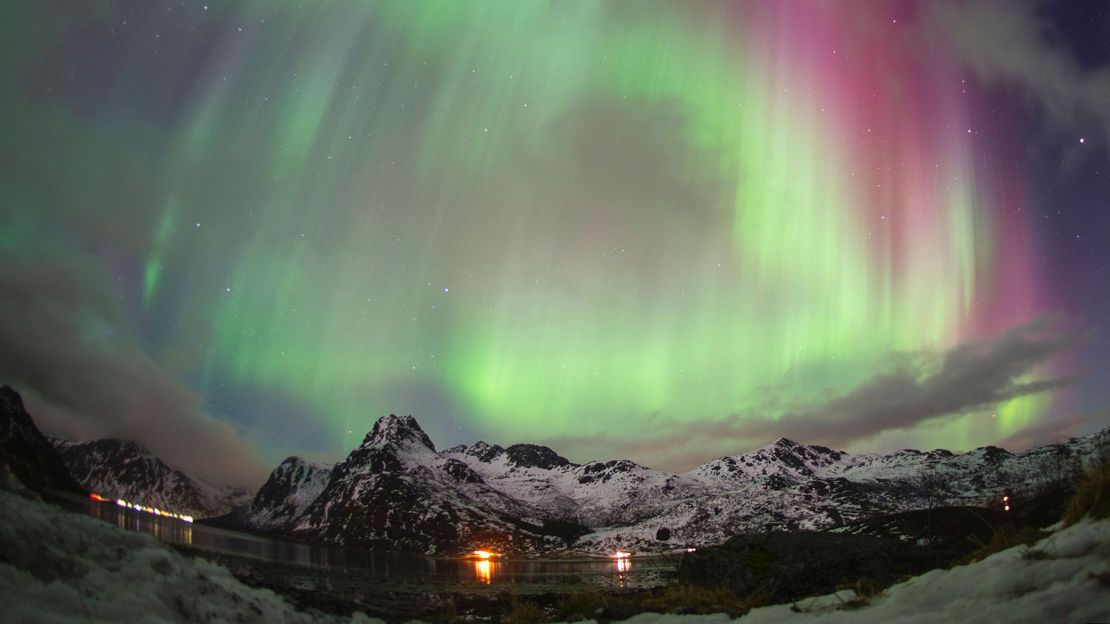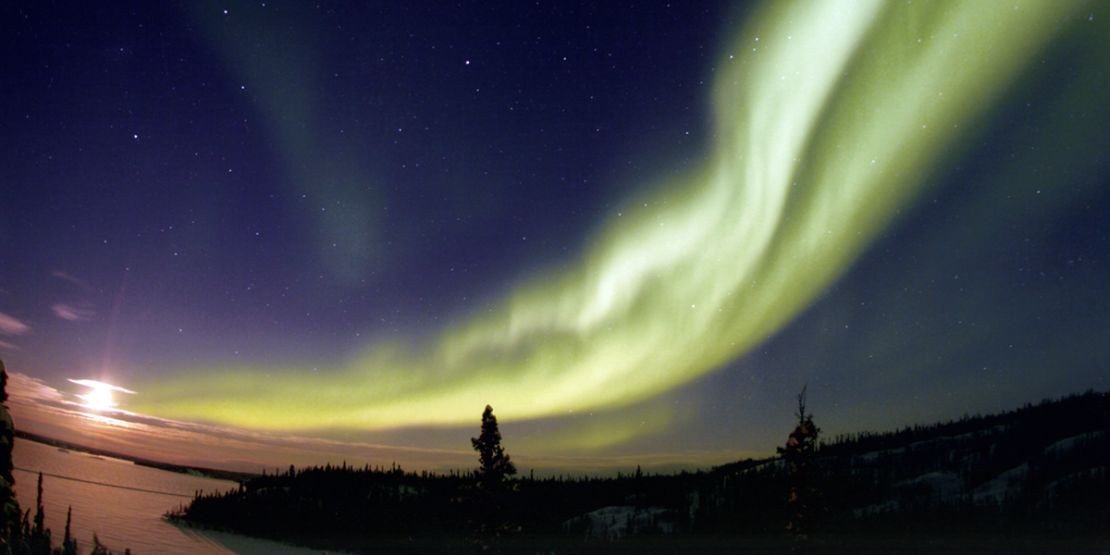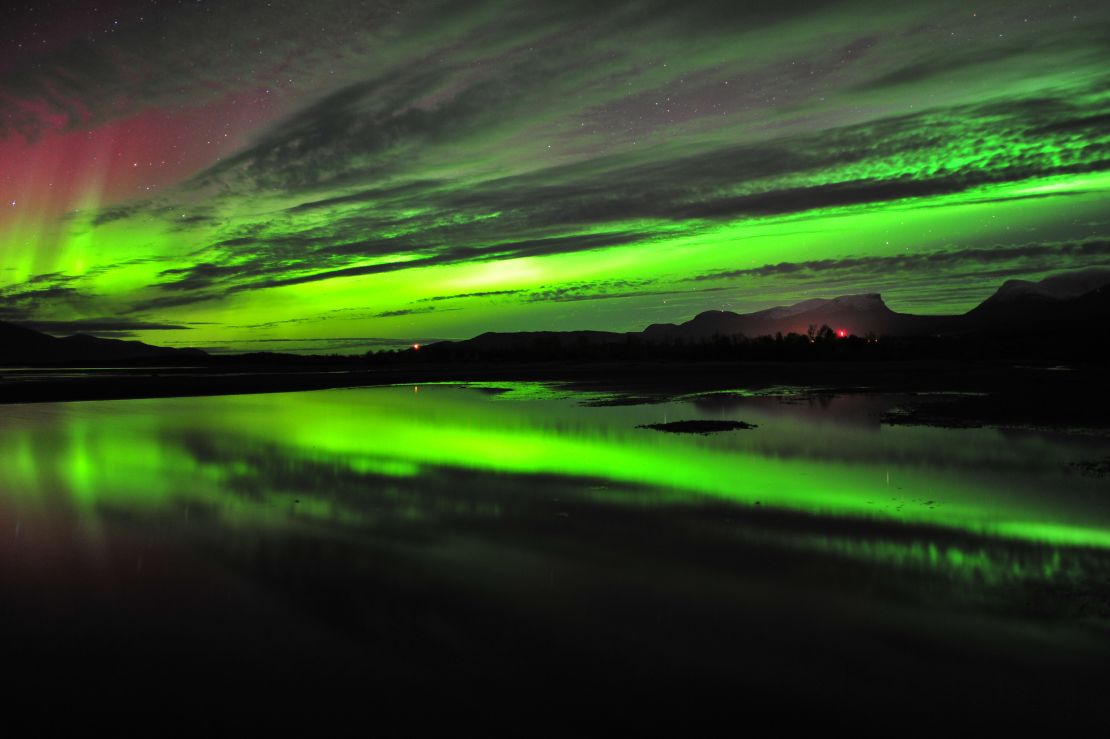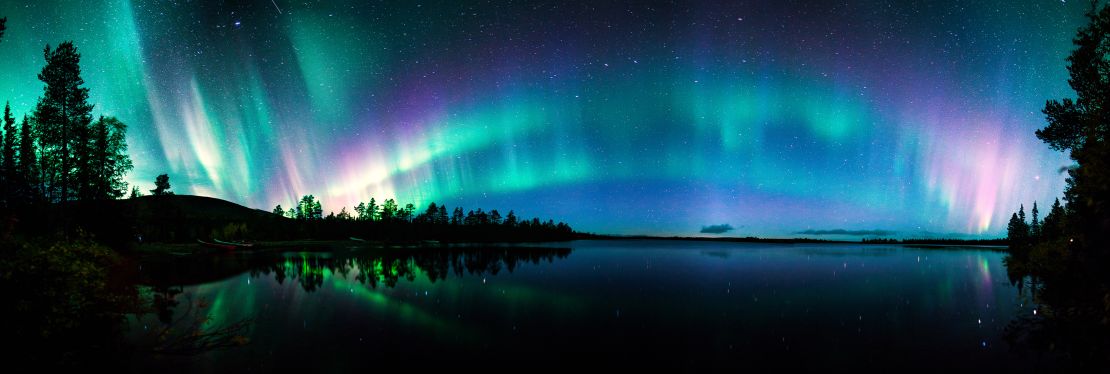The Northern Lights are on the wish list of most travelers, but how do you track down a phenomenon as elusive as it is spectacular.
Anyone hoping to catch a glimpse needs to head to aurora hotspots to increase their chances of viewing them.
And keep their fingers crossed.
The regions where you have the most chance of seeing the Northern Lights are at a latitude of 66 to 69 degrees north – a sliver of the world that includes northern Alaska and Canada and bits of Greenland, northern Scandinavia and northern Russia.
“The vast majority of auroras occur in a band known as the Auroral Zone,” says Alistair McLean, founder of a similarly named tour agency – the Aurora Zone – that specializes in Northern Lights trips.
“This band can expand when solar activity is high.”
Before venturing into any of these freezing wildernesses, it’s worth checking out the kp index, a measure of electromagnetic activity in the atmosphere. A reading of two or higher is considered good for Northern Lights spotting.
You can also head south, for the Aurora Australis (Southern Lights), lighting up from around March onwards.
Here are some of the places auroras show up.
Jokulsarlon, Iceland
Best spot: By the Jokulsarlon Glacier Lagoon.
The Jokulsarlon Glacier Lagoon, on the southeast coast of Iceland about 250 kilometers from Reykjavik, makes for a perfect northern lights shot.
The iceberg-filled lagoon reflects the lights, making the experience all the more awesome.
Check the weather forecast before setting off. Rain or snow – both common in Iceland – tend to dampen the experience.
Fairbanks, Alaska, United States
Best spot: In a hot spring.
Two major challenges when hunting the Northern Lights are the cold and fatigue. Watching them in a hot spring alleviates both.
The city of Fairbanks, in Alaska, is often cited as the best place to see the Northern Lights in the United States. It’s home to the Geophysical Institute at the University of Alaska, Fairbanks, which issues forecasts on Aurora viewing conditions.
Farther afield, in the tiny village of Manley Hot Springs, its possible to watch the lights from the comfort of a spring-fed hot tub.
More information from the Fairbanks-Alaska.com website
Paatsjoki, Finnish Lapland
Best spot: From the Paatsjoki Bridge, Nellim, near the Finnish-Russian border.
“Paatsjoki Bridge provides unparalleled Aurora sightings,” says McLean.
“The chances of success here are at least 90%,” writes Markku Inkila, an Aurora photographer and guide, on the Aurora Zone blog.
Aurora Zone’s four-night Nellim Aurora Quest tour runs from December to the end of March
Unstad, Lofoten, Norway

Best spot: Along Unstad Strand during Lofoten Masters.
Surfing and Northern Lights aren’t the most common duo – but they are on the Lofoten islands, Norway.
About a decade ago, the first Lofoten Masters – dubbed the world’s northernmost surfing championship – took place, attracting only a handful of local surfers.
Today the annual event welcomes a host of international surfers keen to brave the icy waves – and more importantly perhaps, to surf under the Northern Lights.
Open to surfers of all levels, the organizer describes Lofoten Masters as more like a festival than a competition, with facilities such as mobile hot tubs, sauna and food stands.
And if you can’t make it during the competition, Unstad Arctic Surf school provides surfing courses year-round and beachside accommodation.
Lofoten Masters takes place in September 2017. Follow the website for updates.
Unstad Arctic Surf, Unstadveien 105, N-8363 Bøstad, Norway; +47 9706 1201
Cairngorms National Park, Scotland
Best spot: In your own caravan – ideally with a cup of tea.
Up in the Scottish Highlands with a vast dark sky and little light pollution, Cairngorms National Park – the largest national park in Britain – is one of the best places to see the Northern Lights in the country.
The north-facing Cairngorm Mountain car park, along the Dava Way above Forres (with views over the Moray Firth) and Glenlivet Estate (which has been awarded Dark Sky status) are some of the spots recommended by Visit Cairngorms.
To make the experience even better, the Cairngorms is packed with other activities including snowsports, hiking routes and 12 golf courses.
It’s also home to Britain’s only sled dog center and a bridge-based bungee jump.
Go to Visit Cairngorms’ website for a range of accommodation and activity options
Kangerlussuaq, Greenland
Best spot: On a dog-sledding expedition.
With the only international airport in Greenland, Kangerlussuaq is the gateway to the rest of the country.
With an average 300 clear-sky days per year, it’s also another top location for aurora hunters.
World of Greenland – Arctic Circle (Wogac) offers short Northern Lights tours from October to April, but from February to April it also has a three-day dog-sledding expedition to the west coast town of Sisimiut.
Hotel Kangerlussuaq, at the airport, is a convenient place to stay. Keep your curtains open and you may even see the Northern Lights from your room.
The hotel also organizes an ice-cap tour nearby.
Hotel Kangerlussuaq, 3910 Kangerlussuaq, Greenland; +299 841180
Yellowknife, Canada

Best spot: On a heated viewing chair.
Not only do you have a great chance of seeing the Northern Lights around the city of Yellowknife, but the surroundings – and seating – are especially congenial.
A 25-minute drive from the city center, Aurora Village is a teepee campground where you lounge in specially designed, heated viewing chairs, with guides offering background in various languages on the lights.
You’ll need your warm seat – it can hit 40 C below zero here.
Aurora Village also has daytime activities such as dogsled riding and snowmobiling.
Follow the village’s activities on Twitter or visit astronomynorth.com for Aurora updates.
Tromsø, Norway
Best spot: On the deck of a traditional steamer ship.
Sometimes called the “Paris of the North,” the city of Tromsø is a beautiful and accessible location for catching the Northern Lights.
The Norwegian tourism board recommends a voyage on the Norwegian Coastal Steamer Hurtigruten to see the lights along a fjord.
An Astronomy Voyage runs from October to March, following the Aurora Borealis, with astronomers on board. The trip also includes a visit to the Northern Lights Planetarium in Tromsø.
Another option is the village of Ersfjorden, 40 minutes from Tromsø, in the countryside between towering snow mountains and a fjord.
Find more details about the Astronomy Voyage on Hurtigruten’s website. More information about Northern Lights viewing can be found on Tromsø’s official site.
Abisko, Sweden

Best spot: While tucking into afour-course Swedish dinner.
Cloud cover – the aurora hunter’s arch enemy – shouldn’t trouble you around the village of Abisko, in northern Sweden.
“Mountains and favorable prevailing winds combine to create some of northern Scandinavia’s most cloud-free skies,” McLean says.
Aurora Zone’s tour there includes a night’s stay at an Ice Hotel.
Travelers can also spend a night at the Aurora Sky Station, arriving by chair-lift and having a four-course dinner before stepping out to view the Aurora.
Aurora Sky Station, STF Abisko Mountain Station, Sweden; +46 980 40200
MORE: 11 best hotels in the middle of nowhere
Muonio, Finnish Lapland

Best spot: A cabin in the Lapland wilderness.
If you need convincing about Muonio’s stunning northern light displays, check out the Instagram of Antti Pietikainen, an aurora photographer and guide from Muonio.
The village itself isn’t much of a tourist destination.
However, its location in Fell Lapland, the western region of Lapland known for its moor-covered hills, makes Muonio a great stop for exploring the nearby fells including Olos, Levi and Pallas.
The Pallas-Yllastunturi National Park, a skiing and trekking destination, is only a 25-minute drive away and provides a spectacular backdrop for a Northern Lights show.
Southern Hemisphere
Best spot: At the end of a continent.
Antarctica’s the best place to view the aurora australis – the Southern Lights – but it’s also the most inaccessible, unless you’re a scientist or a supporting person (cook, doctor, pilot and so on) on a research expedition.
However, you can still see the lights from the southern tips of South America, Australia, New Zealand and South Africa.
New Zealand’s Stewart Island (“Rakiura” in Maori, meaning the land of glowing skies) is a good option. It has only 400 inhabitants and is covered with great wildlife and natural scenery.
•This story was updated in September 2017
















